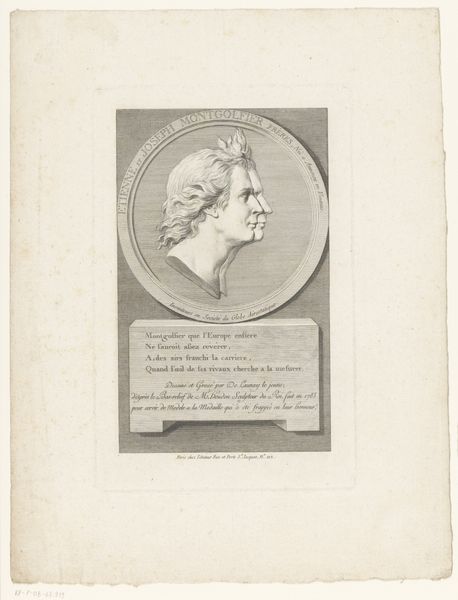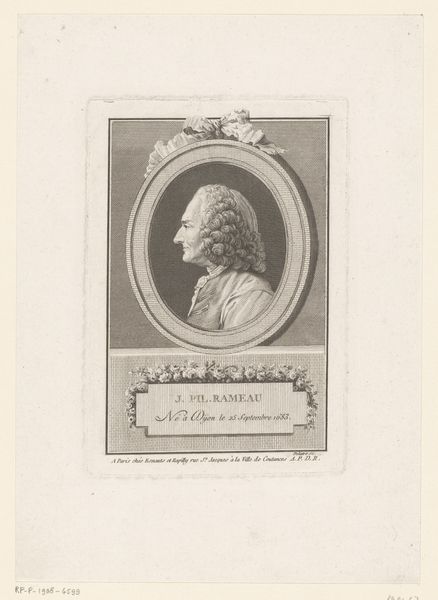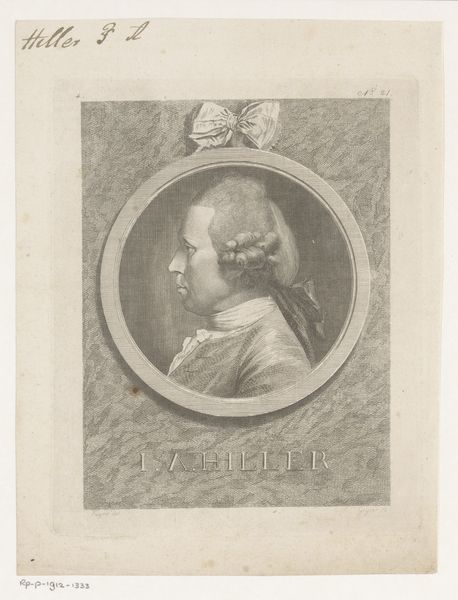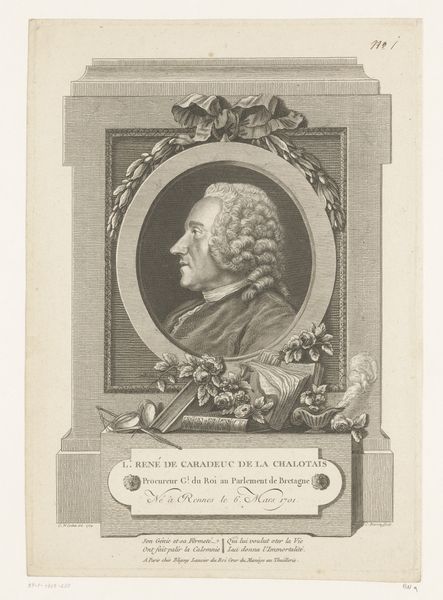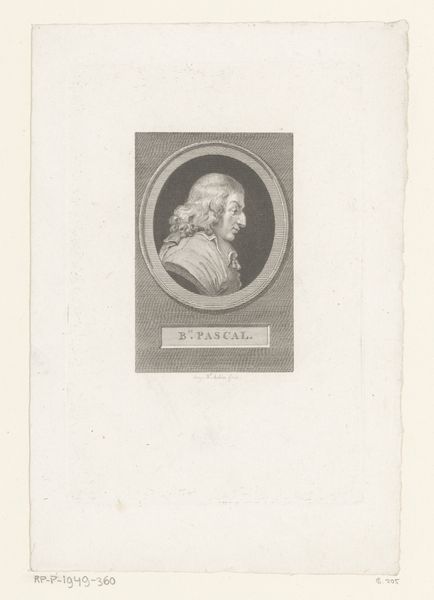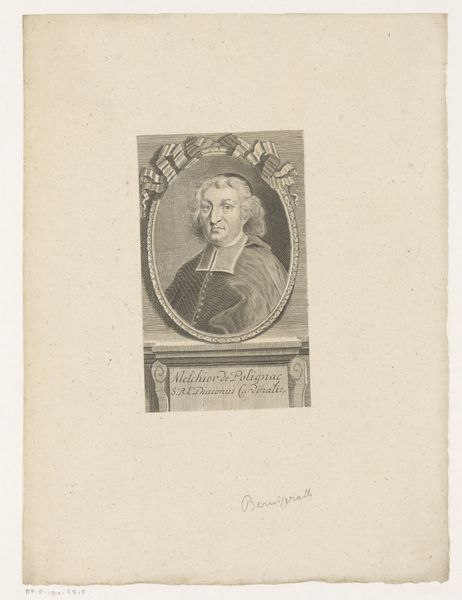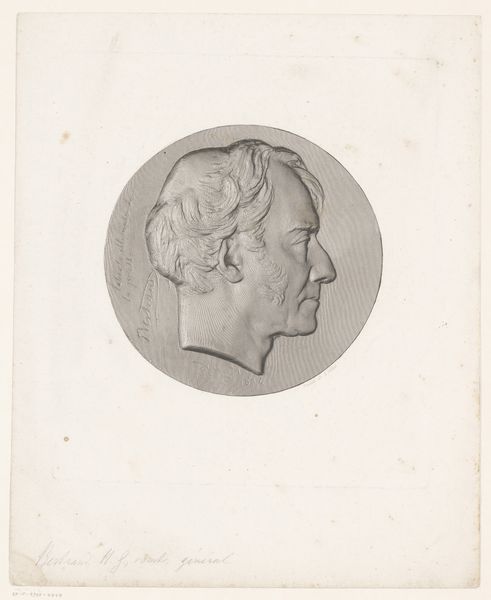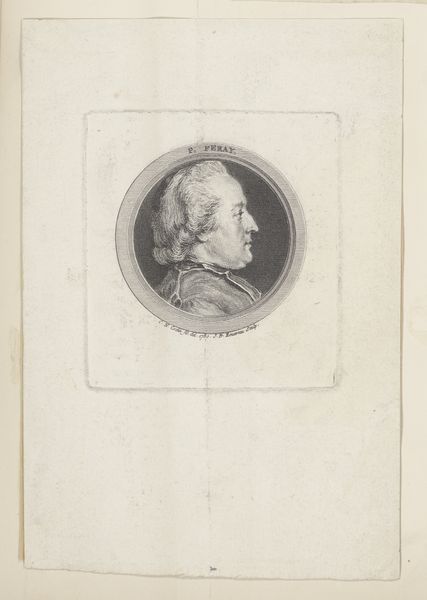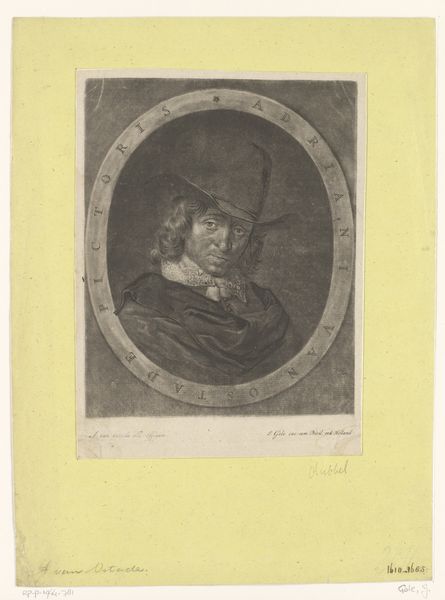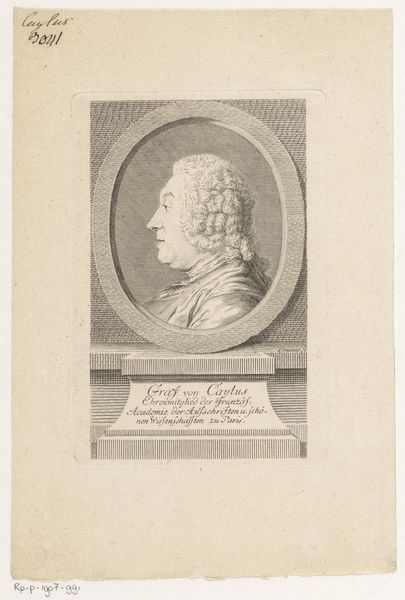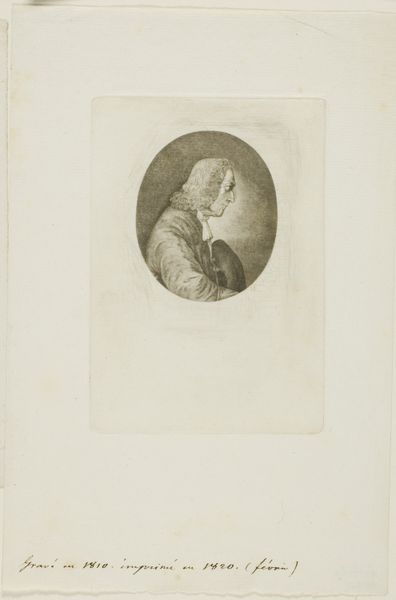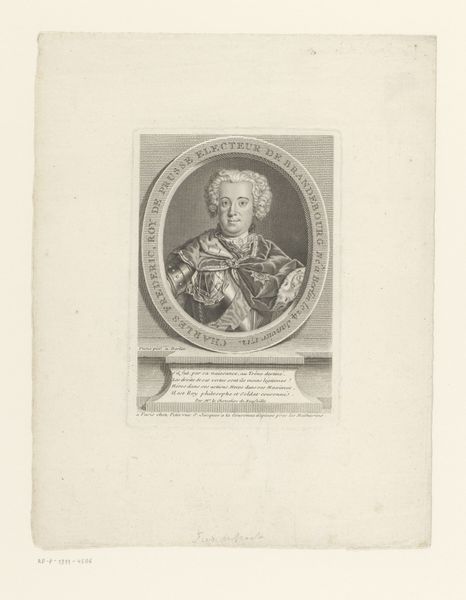
engraving
#
portrait
#
neoclacissism
#
aged paper
#
toned paper
#
old engraving style
#
engraving
Dimensions: height 230 mm, width 190 mm
Copyright: Rijks Museum: Open Domain
Curator: At first glance, there's a sense of quiet dignity about this engraving. The sharp lines create a striking profile. Editor: This engraving, "Portret van Johann Jakob Breitinger" by Heinrich Pfenninger, dating sometime between 1759 and 1815, captures its subject in the neoclassical style—emphasizing clarity, order, and perhaps even a touch of idealization. Curator: Idealization, maybe...but also vulnerability, I think. The way the light catches the roundness of his chin, or the soft curve of his brow... It feels human, rather than god-like. What do you notice first about the composition? Editor: The artist's careful placement of the subject within the tondo is striking. Note the concentric shapes—the oval framing his face, the rectangular ground—contributing to the artwork's stability. I’d note, too, the calculated use of chiaroscuro, rendering depth while simultaneously flattening the overall plane, a common technique of neoclassical portraiture. Curator: Flattening makes it sound… lifeless. To me, though, it’s more like a memory gently fading—the details blurring, but the essence remaining incredibly powerful. Look at those tiny lines depicting his wig; they're so precise, but somehow tender. It's like a secret whispered by the artist about Breitinger's life and times. Editor: Well, yes. While the marks appear individualistic and subtle at first, each etched line carefully constructs an intricate visual texture, reflecting not just his likeness but an aesthetic and historical context. What are your thoughts about that very austere, almost blank lower portion, other than just initials? Curator: Hmm, I wonder if that space invites us to project our thoughts, hopes, or maybe even the fears of those who lived during that time. Like he isn't fully with us and the lack of grounding symbolizes how people just fade? Perhaps Breitinger wanted a space for people to ponder mortality...It adds so much to the portrait! What lasting impact do you think an image like this could have had? Editor: As a work rooted in neoclassical principles, Pfenninger's piece presents itself less as a candid snapshot and more as an articulation of enlightenment ideals and civic virtue, carefully balanced in tones and execution. A study in careful simplicity, with a haunting presence. Curator: Haunting! Yes, perfectly said! Even in its simplicity, there's a presence, like a lingering echo of a man, a period, a whole world.
Comments
No comments
Be the first to comment and join the conversation on the ultimate creative platform.

